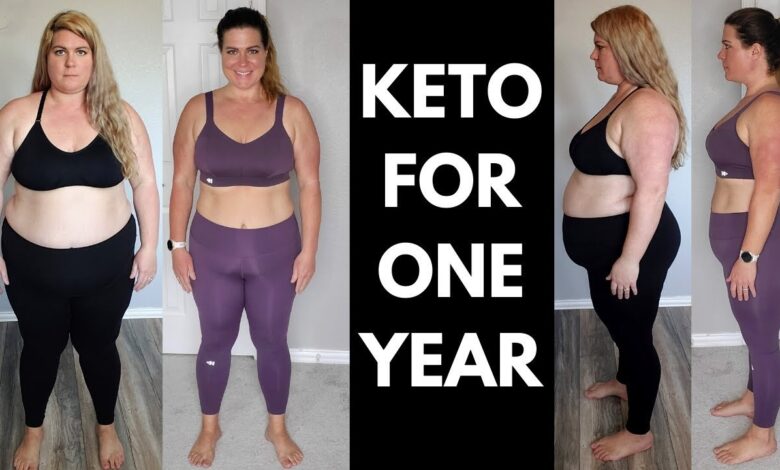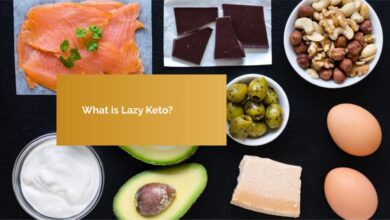
Tracking your progress on the keto diet is not just about watching the numbers on the scale go down; keto is a lifestyle change that requires you to pay attention to various aspects of your health
How to Track Keto Diet Results Effectively: A Complete Guide to Monitoring Your Progress
- Introduction
- Brief overview of the keto diet
- Importance of tracking keto diet results
- Why Tracking Keto Diet Results Matters
- Helps adjust the diet for better results
- Provides motivation and accountability
- Identifies areas of improvement
- How to Track Keto Diet Results: Step-by-Step Guide
- Step 1: Keep a Food Journal
- What to track in your food journal
- Step 2: Monitor Ketone Levels
- Ketone testing methods
- How often to test ketones
- Step 3: Measure Your Body Composition
- Weight vs. body fat percentage
- Tools and devices for body composition measurement
- Step 4: Track Your Energy Levels and Mood
- How keto affects energy and mood
- Using a mood journal to track changes
- Step 5: Keep an Eye on Physical Performance
- How exercise performance can show progress
- Tracking strength, endurance, and stamina
- Step 1: Keep a Food Journal
- Tools and Apps for Tracking Keto Diet Results
- Best apps for tracking food intake and macros
- Tools for measuring ketones (blood, breath, urine)
- How to Adjust Your Keto Diet Based on Results
- What to do if you’re not seeing results
- Adjusting macronutrient intake
- Changing exercise routines to complement the keto diet
- Common Mistakes to Avoid While Tracking Keto Results
- Over-reliance on the scale
- Ignoring other indicators of progress
- Being inconsistent with tracking
- How Often Should You Track Keto Diet Results?
- Frequency of tracking
- Balancing consistency with flexibility
- Success Stories: Real-Life Examples of Effective Keto Tracking
- Case studies of people who successfully tracked their keto progress
- Insights and tips from successful keto dieters
- Conclusion
- Summing up the importance of tracking keto diet results
- FAQs
- What is the most accurate way to track ketones?
- How often should I weigh myself on the keto diet?
- Can I track my keto results without a scale?
- Should I track calories while on the keto diet?
- What if I’m not losing weight on keto despite tracking?
How to Track Keto Diet Results Effectively
Introduction
Tracking your progress on the keto diet is crucial for ensuring you’re staying on track and achieving your desired results. It’s not just about watching the numbers on the scale go down; keto is a lifestyle change that requires you to pay attention to various aspects of your health. Let’s dive into why tracking is essential and how you can do it effectively.
Why Tracking Keto Diet Results Matters
Tracking the results of your keto diet is more than just about keeping an eye on your weight. When you track your keto diet results, it allows you to:
- Make Adjustments: By monitoring your progress, you can identify areas where you need to tweak your diet or workout routine for better outcomes.
- Stay Motivated: Seeing tangible results can boost your motivation and help you stay committed to your diet.
- Identify Problem Areas: Sometimes, things don’t go as planned. Tracking helps you figure out what’s holding you back from achieving your keto goals, whether it’s your food choices or exercise routine.
By effectively tracking your keto results, you ensure that your efforts are leading you toward long-term success.
How to Track Keto Diet Results: Step-by-Step Guide
Tracking your keto progress involves several key steps. Let’s break down each one:
Step 1: Keep a Food Journal
A food journal is one of the most effective ways to track your keto progress. This helps you monitor your daily macronutrient intake and avoid any sneaky carbs that could hinder your progress.
- What to track: Write down everything you eat, including meals, snacks, and drinks. Don’t forget to include the portion sizes. Be specific about your fat, protein, and carb intake.
- Apps to help: MyFitnessPal, Cronometer, and Carb Manager are excellent tools for logging your food.
Step 2: Monitor Ketone Levels
Ketones are produced by your liver when you follow a low-carb, high-fat diet. The presence of ketones in your blood, urine, or breath indicates that your body is in a state of ketosis.
- Ketone testing methods: You can test your ketones through three primary methods: blood testing, breath testing, and urine strips.
- How often to test: Aim to test your ketones at least once a day, preferably in the morning before eating, for the most accurate readings.
Step 3: Measure Your Body Composition
While weight is a common tracking method, body composition is a much more accurate indicator of progress.
- Why body fat percentage matters: Keto helps you lose fat while preserving muscle, which is why monitoring body fat percentage is more important than just tracking your weight.
- Tools for measurement: You can use body fat scales, calipers, or even get a DEXA scan for precise measurements.
Step 4: Track Your Energy Levels and Mood
Many keto dieters experience shifts in their energy levels and mood as their bodies adjust to burning fat for fuel.
- What to watch for: Pay attention to how your energy fluctuates throughout the day, how your mood is affected, and if you experience any keto flu symptoms.
- Using a mood journal: Write down how you feel each day. This can help you spot patterns and identify any potential imbalances.
Step 5: Keep an Eye on Physical Performance
Tracking how your body performs during exercise is a great way to monitor progress. Whether you’re lifting weights, running, or doing yoga, pay attention to:
- Strength and endurance: Are you lifting heavier weights? Running longer distances? These are signs that your body is adapting well to the keto diet.
- Tracking performance: Keep a fitness journal to track your improvements over time.
Tools and Apps for Tracking Keto Diet Results
There are several tools and apps that can help you track your keto diet results. Some of the most popular ones include:
- Food Tracking Apps: MyFitnessPal, Carb Manager, and Cronometer help you log your meals and track your macronutrients.
- Ketone Testing Devices: Keto-Mojo and Precision Xtra are great for measuring blood ketones. Alternatively, you can use Ketonix for breath analysis.
- Body Composition Scales: Scales like Withings Body+ or Fitbit Aria measure not just your weight but your body fat percentage as well.
How to Adjust Your Keto Diet Based on Results
If you’re not seeing the results you want, it’s time to make some adjustments. Here’s how you can tweak your approach:
- Adjust your macronutrients: If you’re not in ketosis, you may need to lower your carbs further or increase your fat intake.
- Change your workout routine: Exercise is crucial on keto. Incorporate strength training or high-intensity interval training (HIIT) to boost fat loss.
- Stay consistent: The key to success on keto is consistency. If you’re not seeing results, review your tracking and ensure that you’re sticking to your plan.
Common Mistakes to Avoid While Tracking Keto Results
Here are some common mistakes that can skew your keto tracking:
- Over-reliance on the scale: Remember, weight isn’t the only indicator of success. Focus on body composition and other factors.
- Ignoring other indicators: Track your energy, mood, and physical performance. These are just as important as the numbers on the scale.
- Inconsistency: Tracking is only effective if you’re consistent. Skip days or incomplete tracking can give you inaccurate results.
How Often Should You Track Keto Diet Results?
Consistency is key, but how often should you track?
- Daily: Track your food intake and ketone levels daily to monitor your progress.
- Weekly: Measure your body composition weekly to spot trends.
- Monthly: Take progress pictures and check your performance during workouts monthly.
Success Stories: Real-Life Examples of Effective Keto Tracking
Numerous success stories show the benefits of tracking keto diet results:
- Case Study 1: Sarah, a keto dieter, lost 40 pounds by tracking her food intake and adjusting her macronutrient ratio when she wasn’t losing weight.
- Case Study 2: John used a body fat scale to track his progress and discovered that he was building muscle while losing fat, leading him to increase his protein intake.
Read also Optimize Insulin Sensitivity: How the Keto Diet Controls Blood Sugar
Conclusion
Tracking your keto diet results is essential for long-term success. It helps you stay on track, identify any potential issues, and adjust your diet and exercise routine accordingly. Remember, it’s not just about the scale – focus on your body composition, energy levels, and overall well-being. Keep tracking, stay consistent, and you’ll see the results you’re aiming for.
FAQs
1. What is the most accurate way to track ketones?
Blood testing is the most accurate method for measuring ketone levels. Devices like the Keto-Mojo or Precision Xtra offer reliable readings.
2. How often should I weigh myself on the keto diet?
Weigh yourself once a week, preferably in the morning before eating, to avoid fluctuations due to water retention or other factors.
3. Can I track my keto results without a scale?
Yes! Track your body fat percentage, energy levels, mood, and exercise performance for a more comprehensive view of your progress.
4. Should I track calories while on the keto diet?
Tracking calories isn’t necessary for everyone, but if you’re not seeing results, it can be helpful to monitor your caloric intake and macronutrient ratios.
5. What if I’m not losing weight on keto despite tracking?
If you’re not losing weight, re-evaluate your carb intake, body composition, and exercise routine. You might need to adjust your macronutrient ratios or increase your physical activity.






One Comment